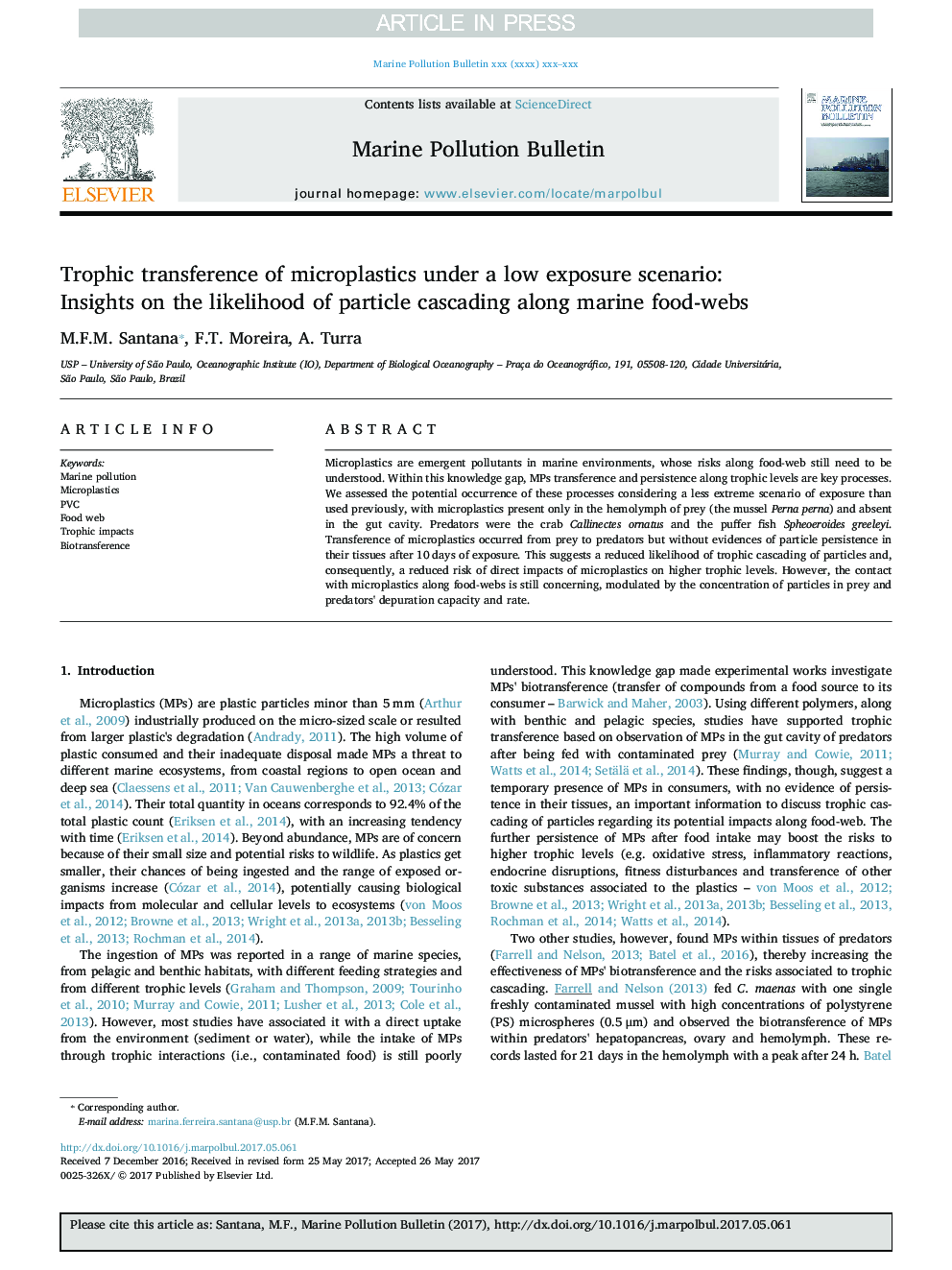| Article ID | Journal | Published Year | Pages | File Type |
|---|---|---|---|---|
| 5757306 | Marine Pollution Bulletin | 2017 | 6 Pages |
Abstract
Microplastics are emergent pollutants in marine environments, whose risks along food-web still need to be understood. Within this knowledge gap, MPs transference and persistence along trophic levels are key processes. We assessed the potential occurrence of these processes considering a less extreme scenario of exposure than used previously, with microplastics present only in the hemolymph of prey (the mussel Perna perna) and absent in the gut cavity. Predators were the crab Callinectes ornatus and the puffer fish Spheoeroides greeleyi. Transference of microplastics occurred from prey to predators but without evidences of particle persistence in their tissues after 10Â days of exposure. This suggests a reduced likelihood of trophic cascading of particles and, consequently, a reduced risk of direct impacts of microplastics on higher trophic levels. However, the contact with microplastics along food-webs is still concerning, modulated by the concentration of particles in prey and predators' depuration capacity and rate.
Related Topics
Physical Sciences and Engineering
Earth and Planetary Sciences
Oceanography
Authors
Santana M.F.M., Moreira F.T., Turra A.,
